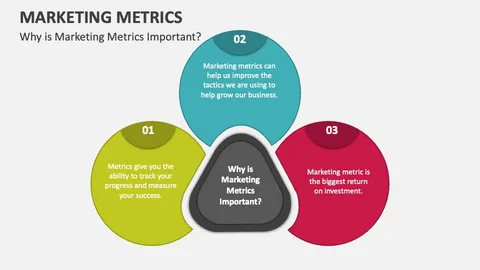Marketing Metrics That Matter Most for Measuring Success

In the fast-evolving world of marketing, success hinges on the ability to measure and optimize performance with precision. Marketing metrics provide the data-driven insights needed to evaluate campaigns, allocate resources effectively, and drive business growth. However, with an abundance of metrics available, identifying those that truly matter can be challenging. By focusing on key performance indicators (KPIs) that align with strategic goals, businesses can gain a clear understanding of what works and where improvements are needed. This article explores the most critical marketing metrics for measuring success, offering guidance on how to leverage them for smarter decision-making.
Establishing a Foundation with Conversion Metrics
At the heart of any marketing strategy lies the goal of driving action, whether it’s a purchase, a sign-up, or another desired outcome. Conversion metrics are essential for assessing how effectively campaigns translate interest into tangible results. The conversion rate—calculated as the percentage of users who complete a specific action out of the total audience—serves as a cornerstone metric, providing a direct measure of campaign effectiveness.
For example, an e-commerce brand might track the percentage of website visitors who complete a purchase, while a B2B company could measure the proportion of leads who request a demo. By analyzing conversion rates across different channels, such as email, social media, or paid ads, businesses can identify which platforms deliver the strongest results and adjust their strategies accordingly.
Beyond the overall conversion rate, metrics like cost per conversion offer deeper insights. This metric reveals the financial efficiency of a campaign by dividing the total campaign cost by the number of conversions achieved. A low cost per conversion indicates a high return on investment, while a high cost may signal the need to refine targeting or creative elements. These metrics provide a clear, actionable picture of how well marketing efforts drive meaningful outcomes.
Gauging Engagement Through Interaction Metrics
Engagement metrics offer a window into how audiences interact with a brand’s content, revealing the strength of the connection at various stages of the customer journey. Metrics such as click-through rates (CTR), time spent on a page, and email open rates indicate whether content resonates with the target audience and encourages further exploration.
For instance, a high CTR on an email campaign suggests that the subject line and content are compelling enough to prompt action, while a low CTR may indicate a need for more relevant messaging. Similarly, time spent on a landing page can reveal whether the content is engaging or if visitors are bouncing due to poor design or irrelevant information. These insights help marketers refine their approach, ensuring that content captures attention and sustains interest.
Social media engagement metrics, such as likes, shares, and comments, also play a crucial role. A campaign that generates significant shares suggests that the content resonates emotionally or provides value worth passing along. By tracking these interactions, businesses can gauge brand affinity and identify content that drives organic reach, amplifying their message without additional spend.
Measuring Reach and Awareness
While conversions and engagement are critical, building brand awareness is often the first step in the customer journey. Reach and impression metrics provide insight into how effectively a campaign is expanding a brand’s visibility. Reach measures the number of unique individuals exposed to a campaign, while impressions track the total number of times content is displayed, regardless of whether it’s seen by new or repeat viewers.
These metrics are particularly valuable for campaigns focused on introducing a brand or product to new audiences. For example, a video ad campaign on a connected TV platform might aim to maximize reach to build awareness among a specific demographic. By analyzing reach alongside engagement metrics, marketers can assess whether their message is not only seen but also resonating with the intended audience.
However, reach alone is not enough. To ensure that awareness translates into action, businesses should pair these metrics with qualitative insights, such as brand recall or sentiment analysis. Tools like surveys or social listening platforms can reveal whether increased visibility is strengthening brand perception, providing a more complete picture of campaign impact.
Tracking Retention and Customer Loyalty
Long-term success depends not only on acquiring new customers but also on retaining existing ones. Retention metrics, such as customer lifetime value (CLV) and repeat purchase rate, are critical for measuring loyalty and the ongoing value of customer relationships. CLV estimates the total revenue a customer is expected to generate over their relationship with a brand, offering a lens into the long-term impact of marketing efforts.
For example, a subscription-based service might calculate CLV to determine whether retention campaigns, such as loyalty discounts or personalized emails, are encouraging subscribers to stay longer. A high CLV indicates that marketing strategies are successfully fostering loyalty, while a low CLV may suggest the need for stronger post-purchase engagement.
The repeat purchase rate complements CLV by measuring the percentage of customers who return to make additional purchases. This metric is particularly relevant for e-commerce brands, where encouraging repeat business is often a priority. By tracking these metrics, businesses can assess the effectiveness of retention strategies and identify opportunities to strengthen customer relationships.
Optimizing with Attribution and ROI Metrics
Understanding which touchpoints drive conversions is essential for optimizing marketing performance. Attribution metrics, such as first-touch, last-touch, or multi-touch attribution, help businesses identify which channels or campaigns contribute most to a desired outcome. For instance, a multi-touch attribution model might reveal that a customer’s journey began with a social media ad, continued with an email nurture sequence, and culminated in a website purchase.
This insight enables marketers to allocate budgets more effectively, focusing on high-performing channels while refining underperforming ones. For example, if data shows that paid search ads drive more conversions than display ads, a business might shift resources to prioritize search campaigns.
Return on investment (ROI) is another critical metric, measuring the financial efficiency of marketing efforts. Calculated by dividing the revenue generated by a campaign by its cost, ROI provides a clear measure of profitability. A high ROI indicates that a campaign is delivering strong results relative to its cost, while a low ROI may prompt a reassessment of strategy or targeting. These metrics ensure that marketing decisions are grounded in financial impact, maximizing efficiency and effectiveness.
Addressing Challenges in Data Interpretation
While metrics are powerful, interpreting them correctly requires context and alignment with business goals. One common challenge is focusing on vanity metrics—such as raw impressions or social media followers—that look impressive but don’t necessarily drive meaningful outcomes. To avoid this, marketers must prioritize metrics that directly tie to objectives, such as conversions for sales-driven campaigns or engagement for brand-building efforts.
Another challenge is data silos, where information from different channels is stored separately, making it difficult to create a unified view of the customer journey. Integrated analytics platforms, such as Google Analytics 360 or Adobe Analytics, can help overcome this by consolidating data from multiple sources. This holistic approach ensures that metrics provide a comprehensive picture of performance, enabling smarter decisions.
Finally, marketers must balance quantitative data with qualitative insights. Metrics like conversion rates provide hard numbers, but customer feedback—through surveys or reviews—offers context about why certain outcomes occur. Combining these perspectives creates a richer understanding of campaign performance, guiding more effective strategies.
Driving Smarter Strategies with Actionable Insights
The metrics that matter most for measuring marketing success are those that provide clear, actionable insights aligned with business objectives. Conversion metrics reveal the effectiveness of driving action, engagement metrics highlight audience connection, and reach metrics gauge visibility. Retention metrics ensure long-term loyalty, while attribution and ROI metrics optimize resource allocation. Together, these KPIs form a robust framework for evaluating and refining marketing efforts.
As marketing becomes increasingly data-driven, businesses must invest in tools and strategies that deliver these insights with precision. Advanced analytics platforms, A/B testing, and attribution modeling empower marketers to move beyond guesswork, making decisions grounded in evidence. By focusing on the right metrics and interpreting them thoughtfully, businesses can not only measure success but also drive continuous improvement, ensuring that their marketing efforts deliver lasting impact in a competitive landscape.





